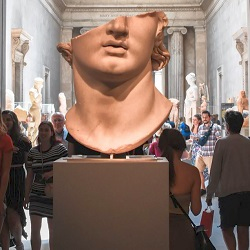Where to start
There are about 2500 museums in the UK, ranging from those employing 900 people to small local or specialist museums employing three people (or run entirely voluntarily). Museums offer work opportunities in curation and outreach, as well as on the business side (marketing, finance, strategy, retail, visitor experience).
The role of a curator varies across the sector. A local museum curator will probably manage the fundraising, acquisitions, interpretation, finance, and marketing, as well as managing the collection itself. At the level of the British Museum, the curators will be more akin to academic researchers, and expected to contribute their specialist knowledge as well as curating exhibitions and building relationships with international stakeholders.
Are you enthusiastic about heritage? Do you have strong project/event management, organisation, and strategic planning skills? Fundraising is increasingly part of most jobs in museums. You may find yourself fundraising to pay for outreach, exhibitions, and purchasing artefacts.
To enter this profession, work experience is essential. Structured internships, however, are rare and by no means a requirement. Volunteering is a common way of getting the experience and insights you need to be competitive in the jobs market.
Be proactive and don’t focus only on the big iconic museums where competition will be strongest. Approach local smaller organisations speculatively, demonstrating how you can be of use. Networking to obtain experience is common. This is also good skill to develop for seeking out employment opportunities in the longer term.
Develop your transferrable skills in fundraising, marketing, outreach, or event management through extra-curricular activities such as student societies or outreach work.
Investigate how the sector is using digital technologies to innovate. Start to build up evidence of your technology skillset through online courses (you can use LinkedIn Learning and Coursera), as well as through extra-curricular activities.
Many roles require museum/heritage studies or museum curatorship postgraduate courses. Having a relevant PhD isn’t a prerequisite for most roles but can give you the edge for some curatorship roles, particularly if it has involved the handling and evaluation of artefacts. A PhD in a relevant area will be expected for research-led curator roles.
Jobs and work experience
- The University of Leicester’s Museum Studies Jobs Desk is the national jobs list for museum- and gallery-focused internships, jobs, and voluntary opportunities.
- The Museums Association (MA) advertises volunteer positions.
- Museum Jobs advertises a range of museum-related jobs.
- University of Cambridge Museums advertises paid and volunteering roles.
Training courses
- The Museum Studies course at Leicester University and the Curation and Conservation courses offered by the Courtauld Institute are widely recognised in the industry, but many others are also available.
- There are specialist courses available for the curation of specific collections such as paintings, textiles, and fashion.
- The University has a wealth of arts-based student societies. Get involved in organising, not just as a member.
- Arts and Heritage Panel catch up recordings
- Vacation work feedback – see where others had arts experience and how they got it.
- University of Cambridge Museums can be a good starting point for volunteering, internships and work experience
The impact of COVID has been profound. Not only in the heritage labour market but also in the ways that the museums work. Sharing collections virtually through digital means was already part of some museums’ portfolios, but it has now become the norm. Demonstrating though experience that you have innovated and used digital technology in this way could make your applications stand out.
Now you have looked at this page, think about your next steps. Everyone's journey is different. There are many ways to move forward. Here are some actions you could take now:
- Look for roles using the resources above.
- Talk to alumni working in this field via Handshake or LinkedIn.
- Talk to a Careers Consultant - book a 1:1 appointment through Handshake.
- Attend events - watch for relevant events.
- Ready to apply? Use the CV and cover letter guide to draft a CV or an application. CareerSet is a tool you can use to review your CV and cover letter. Write a speculative application.
- Subscribe to the Arts, Culture & Heritage Careers Newsletter


